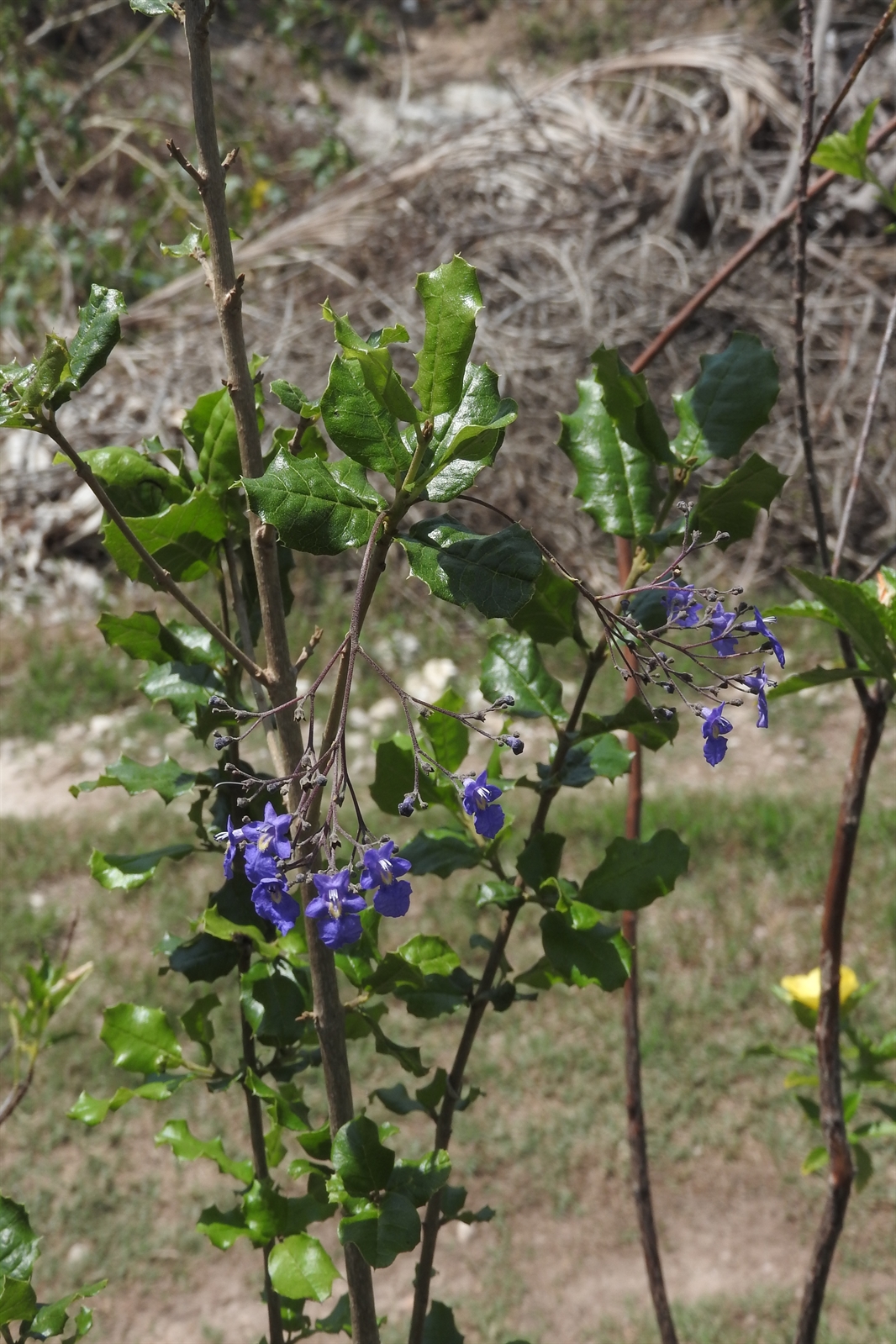Habit: Pseudocarpidium wrightii grows as a large shrub to small tree up to 7 meters in height. Young stems are minutely pubescent. The simple leaves are arranged oppositely, elliptic to obovate, up to 6 cm long and 4 cm wide. The adaxial surface is shiny and the leaf margin spinose dentate with an undulation of the edge.
The complete, perfect, zygomorphic flowers are arranged in panicles in leaf axils. The inflorescences are minutely pubescent. The calyx has 5 greenish purple, fused sepals. The corolla has 5 purple, fused petals with the lower lobe triangular with a yellow throat that is pubescent. There are 4 stamens fused to the corolla. The superior ovary has 4 locules and 4 ovules. The fruit is a 4-lobed brown nutlet.
Habitat: Pseudocarpidium wrightii grows in Dry Broadleaf Evergreen Formations – Shrublands (scrubland coppice).
Distribution: Pseudocarpidium wrightii grows in the Lucayan Archipelago only on Andros island as well as on Cuba.
Medicinal/Cultural/Economic usage: Pseudocarpidium wrightii is not known to be used medicinally in the Lucayan Archipelago.



